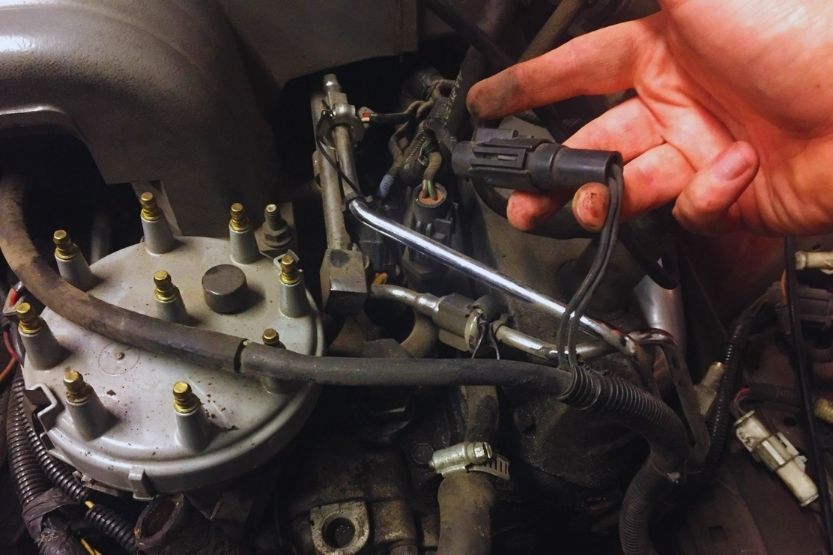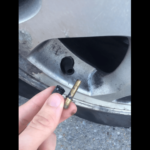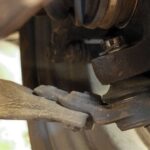A purge valve is one of the most important components of your vehicle. Note, though, that it is not exempt from problems. Eventually, your purge valve will encounter issues that may affect the performance of your entire vehicle. To avoid that, you have to know precisely the symptoms of a bad purge valve.
Five common symptoms of a bad purge valve are as follows:
- Check Engine Light
- Rough Idle
- Hard Time Starting the Engine
- Engine Performance
- Failed Emissions Test
The most common sign of a bad purge valve is a Check Engine light. It may also come with significantly lower fuel mileage and serious engine problems. These symptoms may seem too generalized as they can also be signs of something more severe. It would still be best to check the purge valve first, as it is a relatively more straightforward fix.
Read on to learn more about the bad purge valve symptoms how to fix said issues and prevent them.
What Are the Symptoms of a Bad Purge Valve?

Here are the most common symptoms to determine if your purge valve’s condition is already declining:
1. Check Engine Light
Several reasons could cause the Check Engine light to turn on, and all of them deserve your attention, including a damaged or malfunctioning purge valve.
As mentioned earlier, several sensors monitor the purge valve to ensure that it is working properly. If these sensors do not receive any signals coming from the valve, this will trigger the ECU to light up the Check Engine symbol and send an error code to the diagnostic machine.
2. Rough Idle
What does a rough idle mean? Rough idle means your engine is not running as smoothly as expected. Moreover, the engine would start running on low RPMs and then suddenly increase and back to low again. This symptom is more apparent when the car stops and idles, like when you’re at a red light.
Not acting on the problem will cause this problem to persist and get worse. It will come to the point that your engine will constantly stall when you let it idle, even for just a little while. You should make sure that it does not get to this point.
If a faulty purge valve is to blame for your car’s rough idling, then it is due to a vacuum leak, which is why the engine’s idle is rough.
3. Hard Time Starting the Engine
The vacuum leak caused by a bad purge valve will make it hard to start your car’s engine. Because of the leak, the engine can’t properly control the amount of air in the combustion chamber. When the fuel-air ratio is incorrect, it will not ignite properly. This means that the engine will not start right away.
4. Poor Engine Performance
If you can manage to get your car started, there are more problems that you will be encountering. The first thing you’ll notice is that the car’s engine seems significantly weaker than before. Even when pressing the accelerator pedal, the engine cannot seem to produce enough power for your expected quick acceleration.
The weakness of your engine will be most apparent when you are going uphill. You can also notice this when you try to overtake a marginally slower vehicle on a two-lane road.
5. Failed Emissions Test
The vapor canister purge valve collects the unburnt fuel. After that, it redirects it back into the combustion chamber on the next engine stroke.
This makes the engine more fuel-efficient. Because your car’s purge valve is not working properly, unburnt fuel gets into the exhaust system and gets burned there. This can produce toxic hydrocarbons. The emissions test that your car eventually fails can then detect them.
What Is a Purge Valve?
Component of the EVAP System
The purge valve is a component of the EVAP (Evaporative Emission Control) system. This system keeps the fuel vapors coming from the tank and stores them temporarily inside a charcoal-filled canister.
Electric Solenoid Controlled the ECU
The purge valve is an electric solenoid controlled by the ECU (Electronic Control Unit) in most modern cars. If the engine is not running, the purge valve closes. When it is running, the ECU will pulse the valve opening.
This will allow some fuel vapors from the charcoal canister into the engine to get burned. You’ll know if the valve is working properly if you hear a rhythmic clicking sound in the engine bay.
Sensors Monitor the Purge Flow
Several sensors monitor the purge flow. If it’s less or more than the preset value, it will trigger the ECU to display the Check Engine light. You can see it in your dash.
How Does the EVAP System Work

Small Yet Essential Component
The EVAP system, where the purge valve belongs, is a small yet essential component of all motorized vehicles.
Collects Harmful Fumes in the Gas Tank
The function of the EVAP system is quite simple. It collects the harmful fumes in the gas tank to prevent them from escaping and polluting the air. The EVAP system redirects the fumes into a component called the charcoal canister. The canister then cleans the fumes. After that, it releases them into the combustion cylinder of the engine to burn.
Charcoal Canister Help Trap Dirt Particles
The charcoal canister contains materials that help trap dirt particles and prevent them from escaping into the atmosphere. As the name suggests, this canister contains activated carbon. It is the one responsible for most of its functions.
Cleaned Fumes Go Through Purge Valve
The “cleaned” fumes get diverted into the engine intake from the canister. However, the fumes need to go through the purge valve before getting in.
Purge Valve Regulates the Amount of Fuel and Air
The purge valve is there to protect the engine. It regulates the amount of fuel and air to keep the ratio precise. For instance, if there is too much air in the combustion chamber, it will be “running rich.” This can lead to a rough idle.
Effect of Damaged Purge Valve
If the purge valve malfunctions, nothing will control the amount of air going into the engine. This can make the fuel combustion uneven and inconsistent. This will cause your car to jerk while driving and maybe even stall the engine unexpectedly. We will be discussing these issues in more detail later.
Again, what are the symptoms of a bad purge valve? The five symptoms of a bad purge valve include Check Engine Light, rough idle, difficulty starting the car’s engine, weak engine performance, and failed emissions test.
Where Is the Purge Valve Located?
To check if you have a problematic purge valve, you need to figure out where it is. Even some car guys do not know where the purge valve is. Some do not even know what they look like. This is mainly because it is not that easy to distinguish. Several pipes and hoses run in and out of the modern car’s engine. That said, finding this specific part can be tricky.
On Top of the Engine for Front-wheel-drive Cars
Typically, if you are driving a front-wheel-drive car, you can find the purge valve on top of the engine. You can often find it mounted on the front, just behind the radiator.
Connected to the Engine’s Wiring Harness
You can usually tell that it is the purge valve because it will be connected to the engine’s wiring harness. Aside from electrical wires, you will find a vacuum hose connected on the other side.
How to Test the Purge Valve
Do the Test Yourself
Other than waiting for bad purge valve symptoms, you can test it yourself. Test right away if you start noticing something off about your car.
Purge Valve Test Depends on the Car’s Make and Model
The procedure for testing the purge valve will differ depending on the make and model. It would be better to consult your car’s service manual for clarification. However, the purge valve is typically closed when the engine is off in most cars. This also happens when there is no voltage applied to the valve.
For instance, their service manual recommends using a 9v battery in certain vehicles. Connect the battery’s terminals to the valve and listen if it makes a clicking sound. If it does, then the purge valve is working as intended.
Check for Leaks
However, you still need to check if the purge valve can close properly and not leak. For this, you will need to use a handheld vacuum pump and connect it to the purge valve. If the vacuum pressure drops immediately, even with the valve closed, it means it is not sealing correctly. In that case, replacement is necessary.
Cost to Replace a Bad Purge Valve

Inexpensive to Replace
Although you think you cannot afford to replace the bad purge valve, it is not advisable to ignore the problem. Besides, you will find that it is a fairly inexpensive component to replace. You can typically find purge valves in most automotive parts stores for no more than $20. You can even find cheaper options online.
Have a Mechanic Replace the Purge Valve or Choose the DIY Route
If you currently cannot afford to pay a professional mechanic to replace your purge valve, choose the DIY route. Fortunately, there are plenty of video tutorials that will teach you how to do it yourself. Even if you are not mechanically inclined, the entire replacement process is easy. This means it would require effort to mess it up.
Effects of Driving With Damaged Purge Valve
Driving with a faulty purge valve is not an option. If you aim to save a bit of money now, you will be wasting even more money driving your car as it is. Not only will your car guzzle significantly more gas than before, but you will also be breaking down quite often.
This will lead to costly towing and repairs. If you suspect something wrong with your purge valve, have it checked immediately.
Can You Drive with a Bad Purge Valve?
Too Much Oxygen in the Fuel-Air Mixture
Yes, you can still drive your car even if the purge valve gets stuck in the open position. However, you will find that it is not a pleasant experience. For starters, your engine will always be running rich. This means there is always too much oxygen in the fuel-air mixture in the combustion chamber. It will cause your engine to get all jittery.
Check Engine Light On
In addition, it will cause your Check Engine light always to turn on. If you are a seasoned car owner, this light is the last thing you want to see. You may already know that the reason why the Check Engine light turned on is the purge valve. However, it is not a good idea to ignore it.
Worse Problems That Can Damage Car
Just imagine, the ECU detects another, more serious problem with the engine. You are not aware of it because you have been ignoring the Check Engine light all this time. The problem, which you could have remedied long ago, should you have known about it, has gotten worse. It may worsen to the point that you can no longer use your car.
Conclusion – Symptoms of a Bad Purge Valve
Symptoms of a bad purge valve are as follows:
- Check Engine Light
- Rough Idle
- Hard Time Starting the Engine
- Engine Performance
- Failed Emissions Test
The most common symptoms of a bad purge valve include check engine light, horrible gas mileage, and serious engine problems. These symptoms might seem too general to pin on just one source.
However, you should still consider yourself lucky if the purge valve is the cause of these problems. Replacing a faulty purge valve is not that costly. You can even do it yourself if you are willing to learn how to.
If you start seeing these symptoms, preferably just the first two, you should check your car’s purge valve right away. This is so you will know if it is still working properly.

![Driving With a Bad Purge Valve [What Happens? Signs and Symptoms] driving with a bad purge valve](https://roadsumo.com/wp-content/uploads/2022/02/driving-with-a-bad-purge-valve-150x150.jpg)


![Bad Timing Belt Symptoms [6 Main Symptoms] Bad Timing Belt Symptoms](https://roadsumo.com/wp-content/uploads/2021/09/bad-timing-belt-symptoms-150x150.jpg)


![Read more about the article P0420 Code [Causes and How to Fix]](https://roadsumo.com/wp-content/uploads/2021/03/P0420-code-300x200.png)

